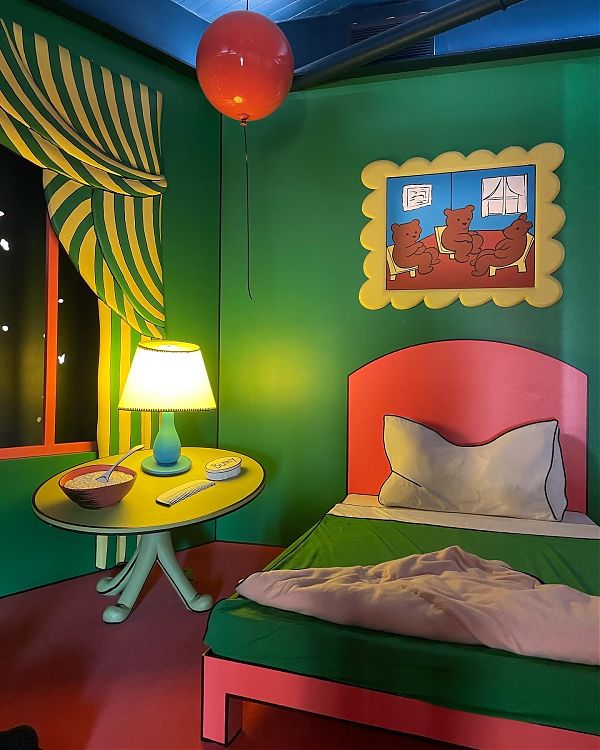Immersive Museum Exhibits for Kids Know How to Compete With Screens

The scene at The Rabbit hOle in Kansas City, Missouri.
In the great green room (just off the bookshop) there was a telephone (oversized) and a red balloon (hung from the ceiling) and a picture of a cow jumping over the moon (above the fireplace). Lift the telephone’s handset — a novelty unto itself for the under-10-year-olds — and the son of Goodnight Moon illustrator Clement Hurd reads that book’s alluring, rhythmic first pages, calling out each element in the room (phone, balloon, cow).
Transfixing, for the child not otherwise distracted by three-dimensional versions of other objects pictured in the book, like the toyhouse (big enough to crawl inside), the mittens on the drying rack (detachable) or the glowing electric flames (cosy).
This scene would be enough to capture the attention of most children. But as visitors to “The Rabbit hOle,” a new 45,000-square-foot (and growing) immersive experience in Kansas City, Missouri, will soon find, there is always another twist to this story. Tug on the fake fire and it moves as one piece, bringing the andirons, logs and fireback with it. Through an arched opening, one can see white floors and painters’ tape.
“In the next phase, this will lead to the Tons of Fun room,” says Emily Hane, development and grants manager for this sprawling North Kansas City museum devoted to children’s books.
In the world down the rabbit hole, first dreamed up by artists, co-founders and former booksellers Pete Cowdin and Deb Pettid in 2015, Goodnight Moon leads to John Steptoe’s urban stroll Uptown, which leads to Tomie de Paola’s Italian village tale Strega Nona, and on and on, winding through building environments from one beloved story book after another. As they make their way through the museum’s levels, carved from a former warehouse by architects Multistudio, kids groove in Harlem or read a book under a chapeau-bedecked tree, bake a pie with Sal’s mother or check to see whether Klassen’s bear really did eat that rabbit.
“Not everyone knows what they want or need until they see it,” says Cowdin. “We build this and it is like, plop, in the middle of this phone-driven world it is a total place of relief for people.”
On X
Follow @LangeAlexandraOn Instagram
Featured articles
CityLab
New York Times
New Angle: Voice
Getting Curious with Jonathan Van Ness